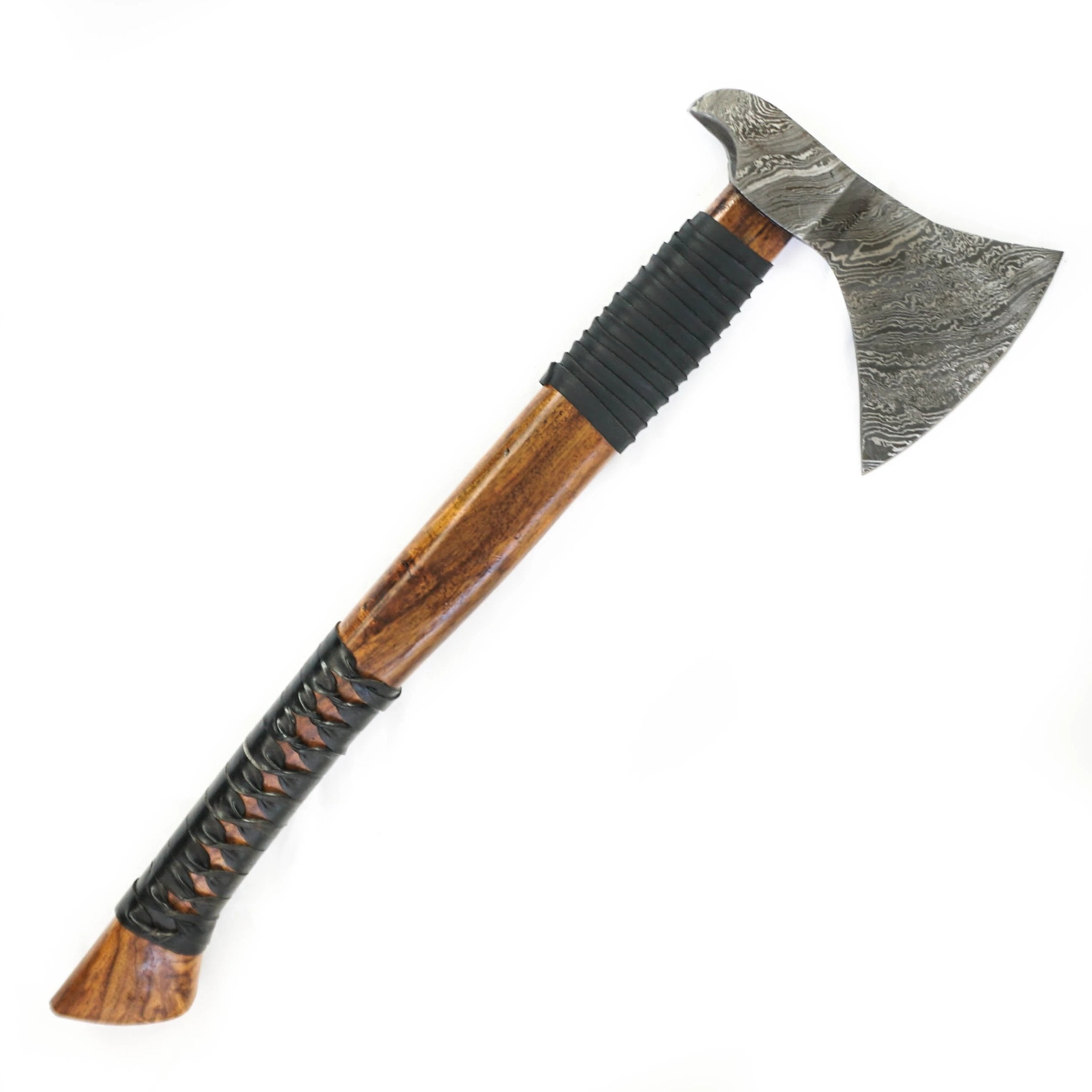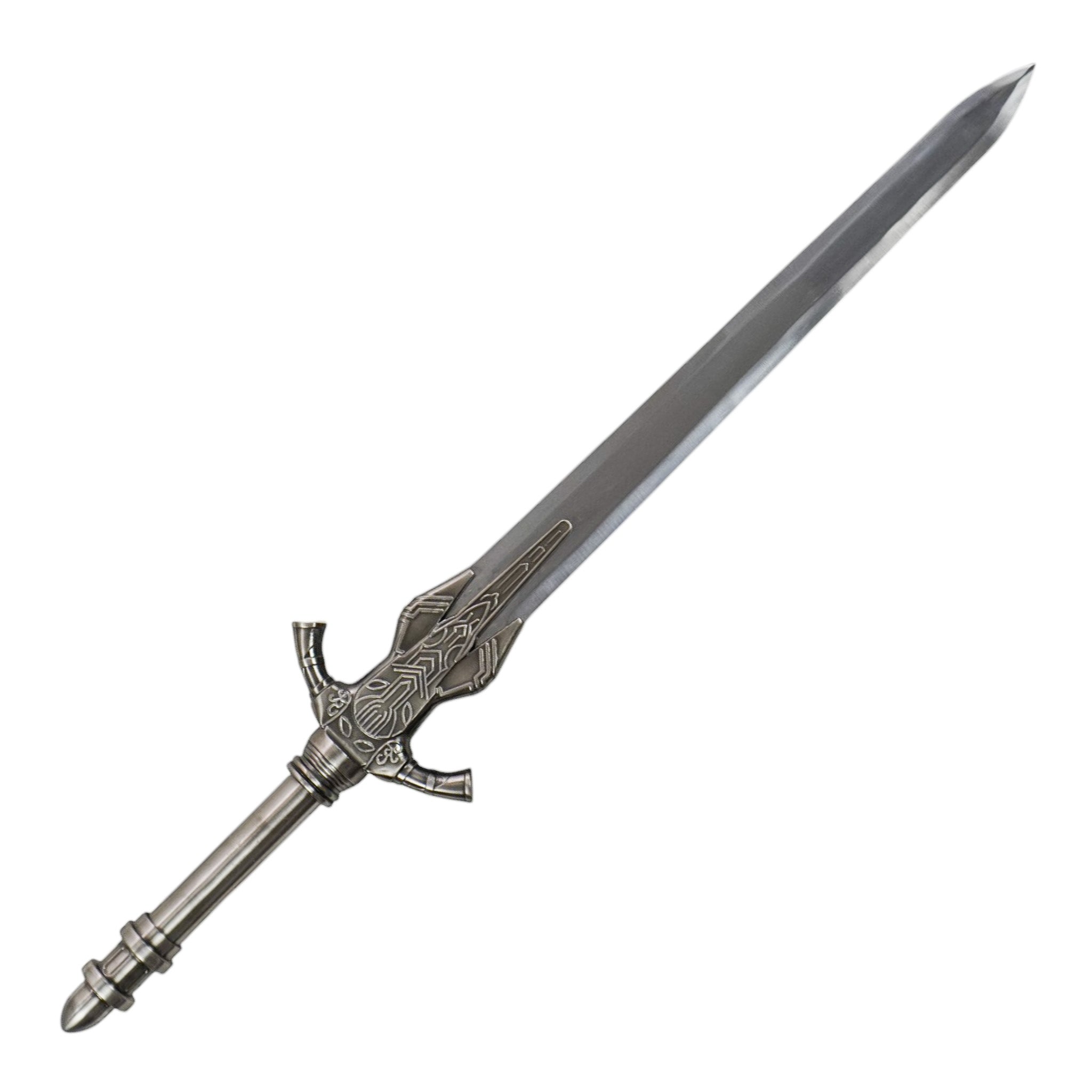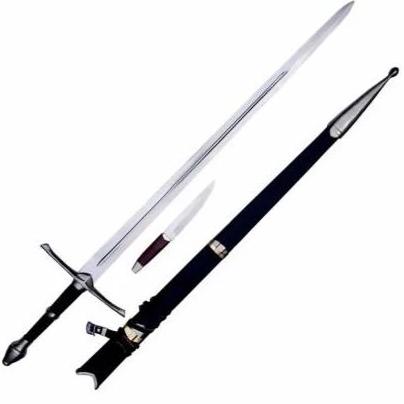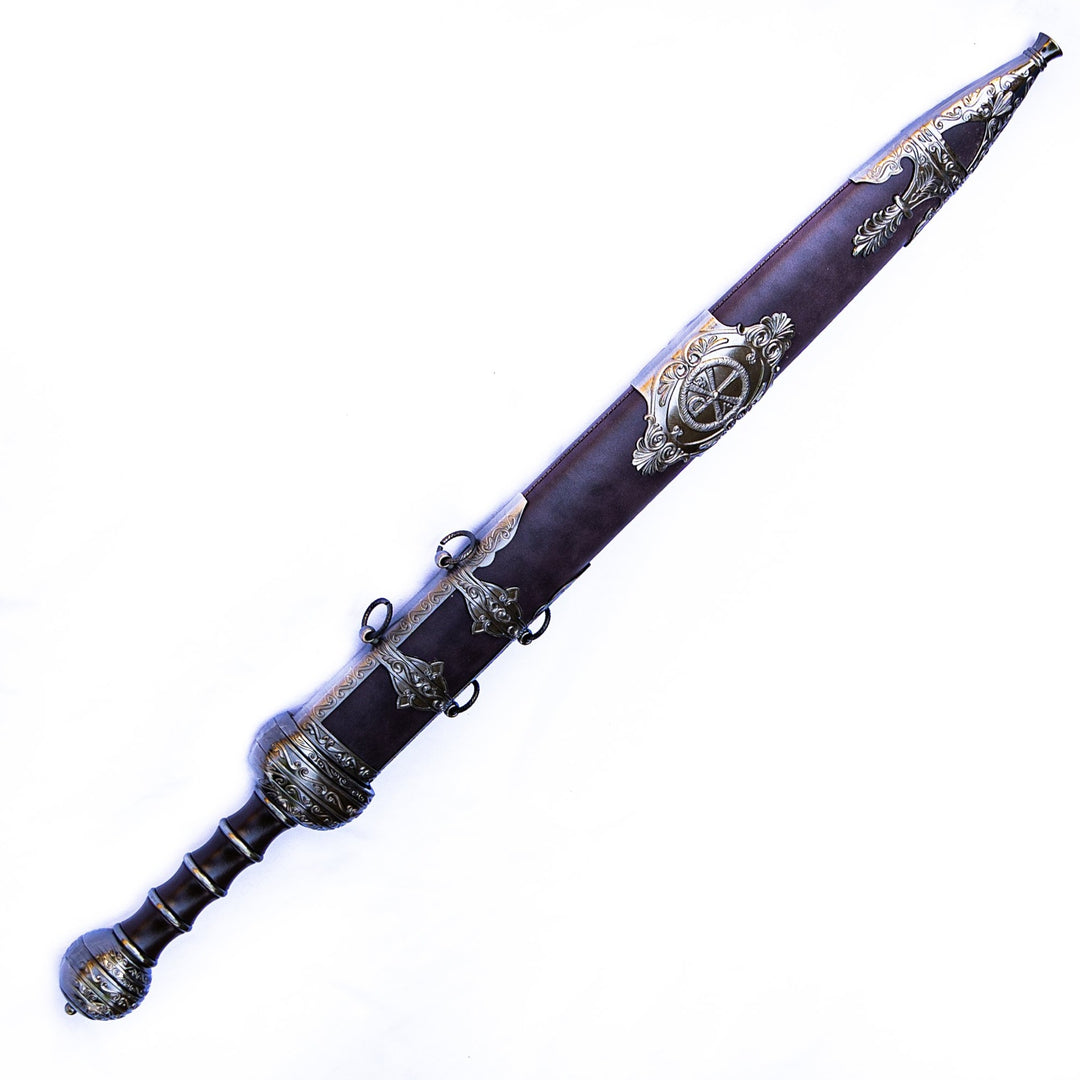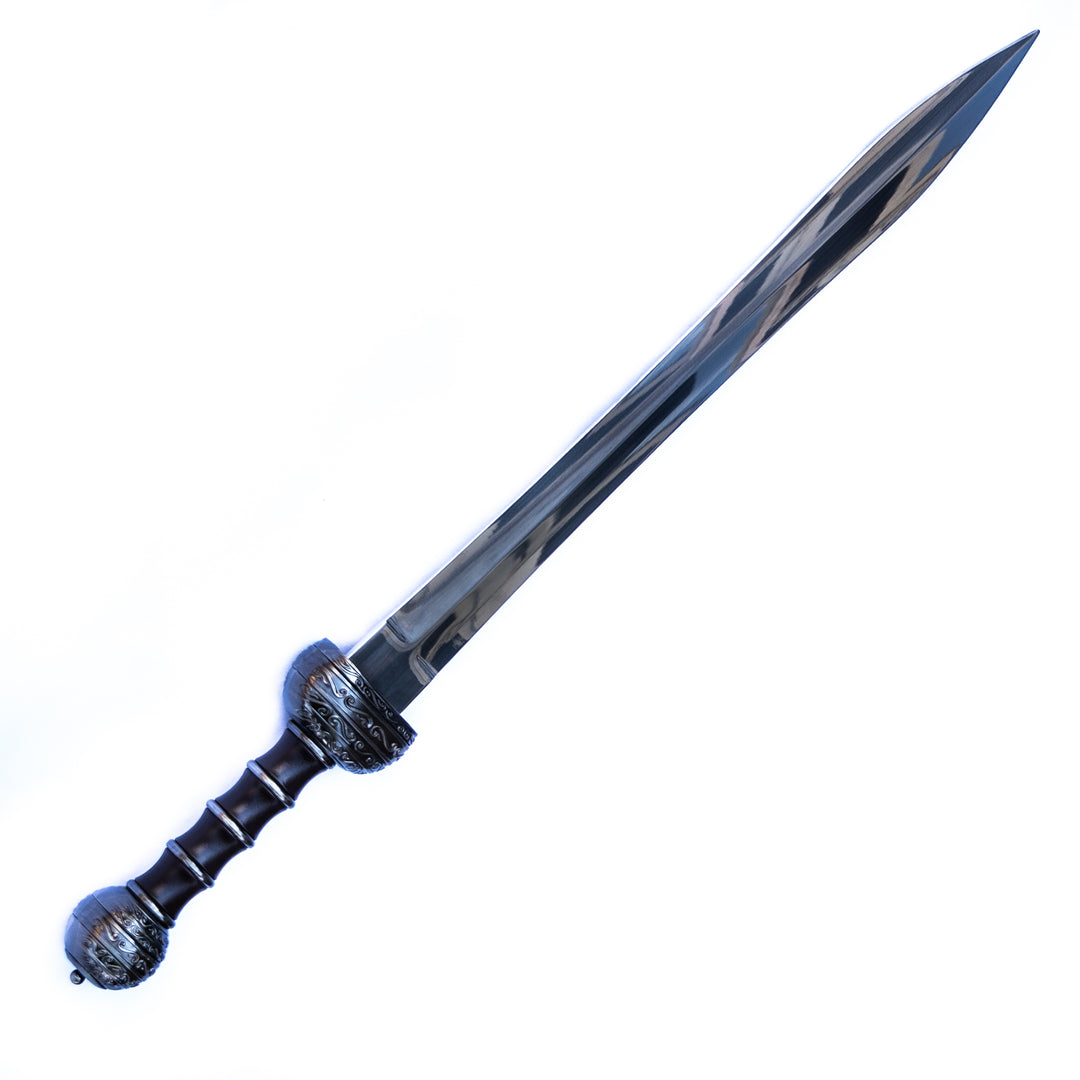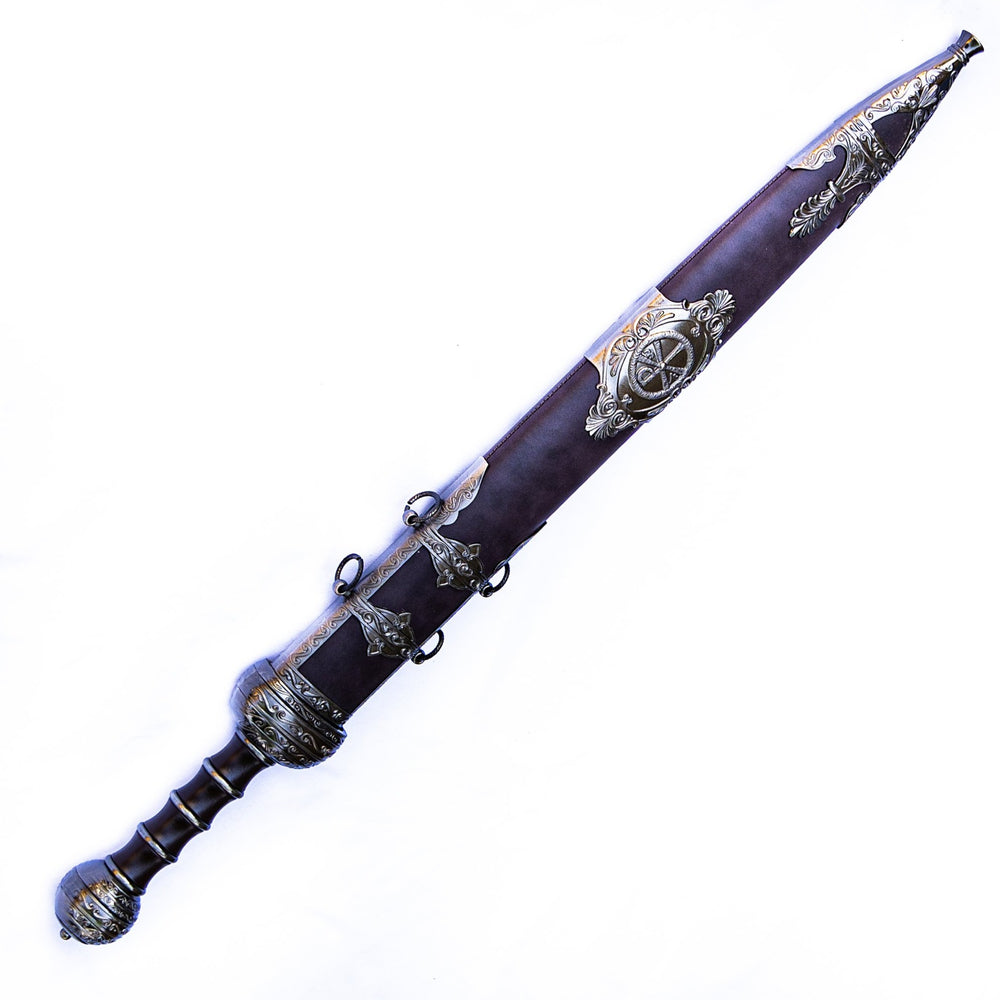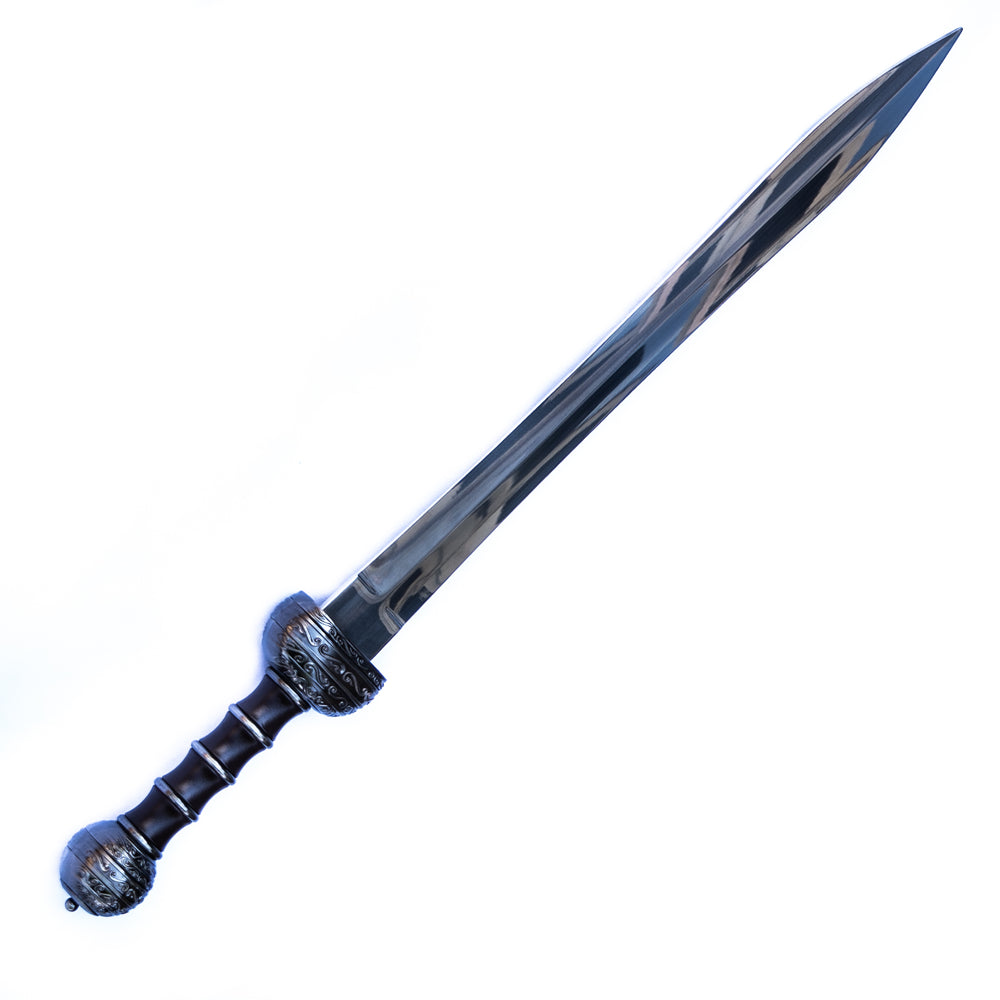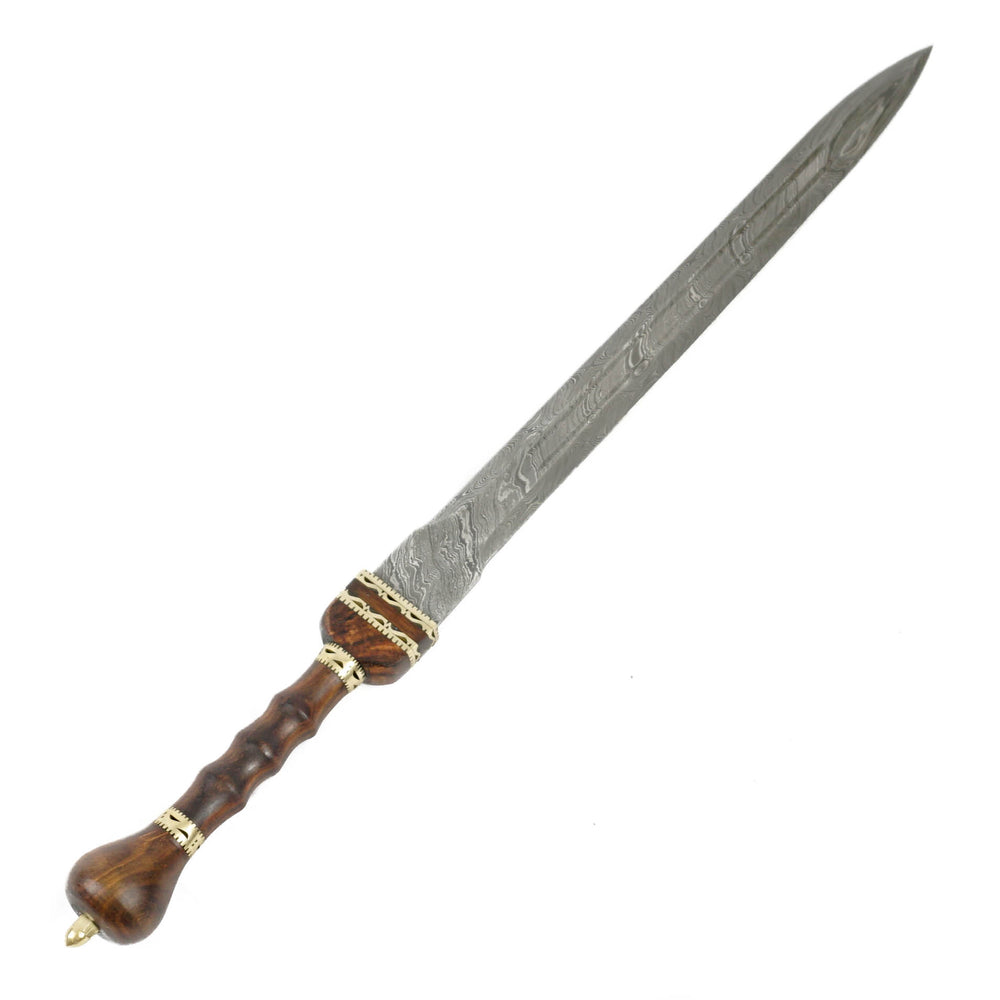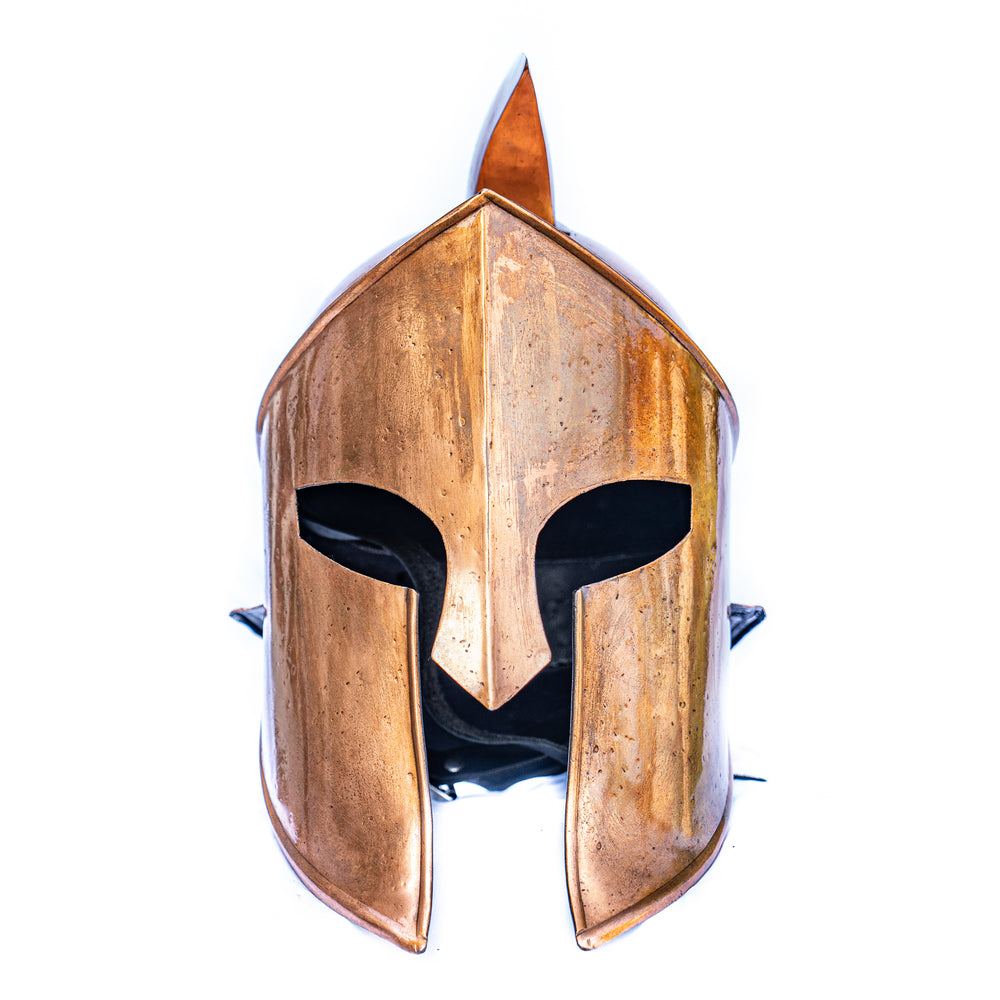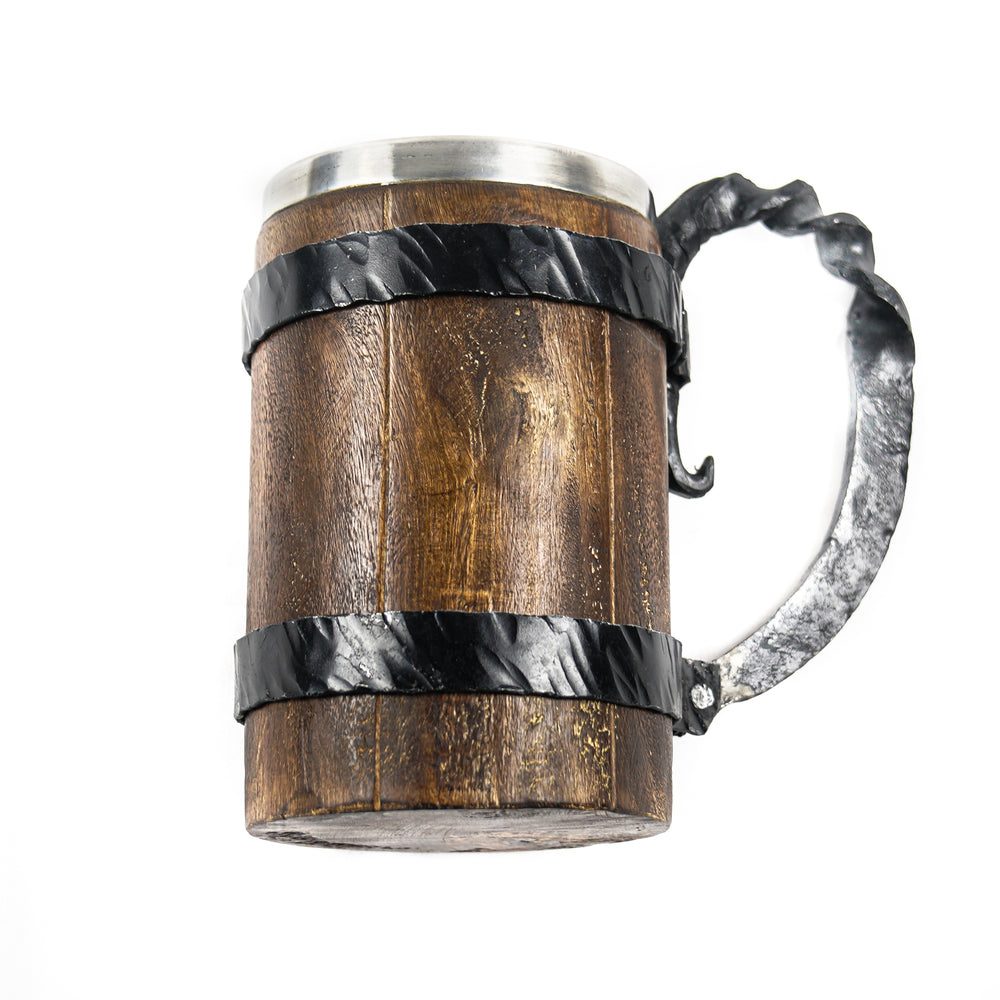Mainz Gladius Sword: The Quintessence of Roman Valor
Embark on a historical journey back to the Roman battlefields with our faithfully recreated Mainz Gladius Sword. This emblematic weapon mirrors the valor and the indomitable spirit of the Roman foot soldiers, carrying with it the echoes of legendary battles fought in the bygone eras.
Historical Resonance:
The Gladius, Latin for sword, was the hallmark of Roman infantry. Before engaging in the intensity of close combat, soldiers launched javelins, thereafter drawing their Gladius swords, perfectly paired with shields, to dominate the battlefront. Originating from the Greek xiphos, the Gladius underwent an evolution by the 3rd century B.C.E., integrating elements from the Celtiberian and Hispanian warcraft. Its various adaptations, inspired by the cultures the Romans encountered, led to distinctive styles like the Hispaniensis Gladius (or the Spanish Xiphos), Mainz Gladius, Fulham Gladius, and Pompeii Gladius, each embodying a unique tale of Roman conquest.
Craftsmanship:
Our Mainz Gladius, inspired by the early renditions from Germany, is a testament to superior craftsmanship. The blade, forged from premium stainless steel, assures durability and a sharp, enduring edge, suited for both chopping and thrusting.
Elegant Aesthetics:
The handle, an exquisite blend of wood and casting, provides a comfortable grip and a visually stunning contrast against the gleaming blade. Accompanied by a bespoke wooden sheath, this sword is as much a piece of art as it is a symbol of ancient martial prowess.
Technical Specifications
- Overall Length: 28 inches
- Sheath: Custom Wood Sheath
- Blade Material: Premium Stainless Steel
- Handle Material: Wood and Casting
Gladius Sword - Mainz Gladius - Gladiator/ Roman Sword - 28"
This meticulously designed Mainz Gladius Sword does more than just reminisce about the past; it invites you to become a part of a saga written with steel and courage. Whether showcased as a centerpiece in your collection or wielded in historical re-enactments, this sword reverberates with the legendary might of Rome. Discover the legacy of Roman valor, rekindle the spirit of an ancient warrior, and let every grasp of this sword narrate tales of a time where valor led the charge into the annals of history.

